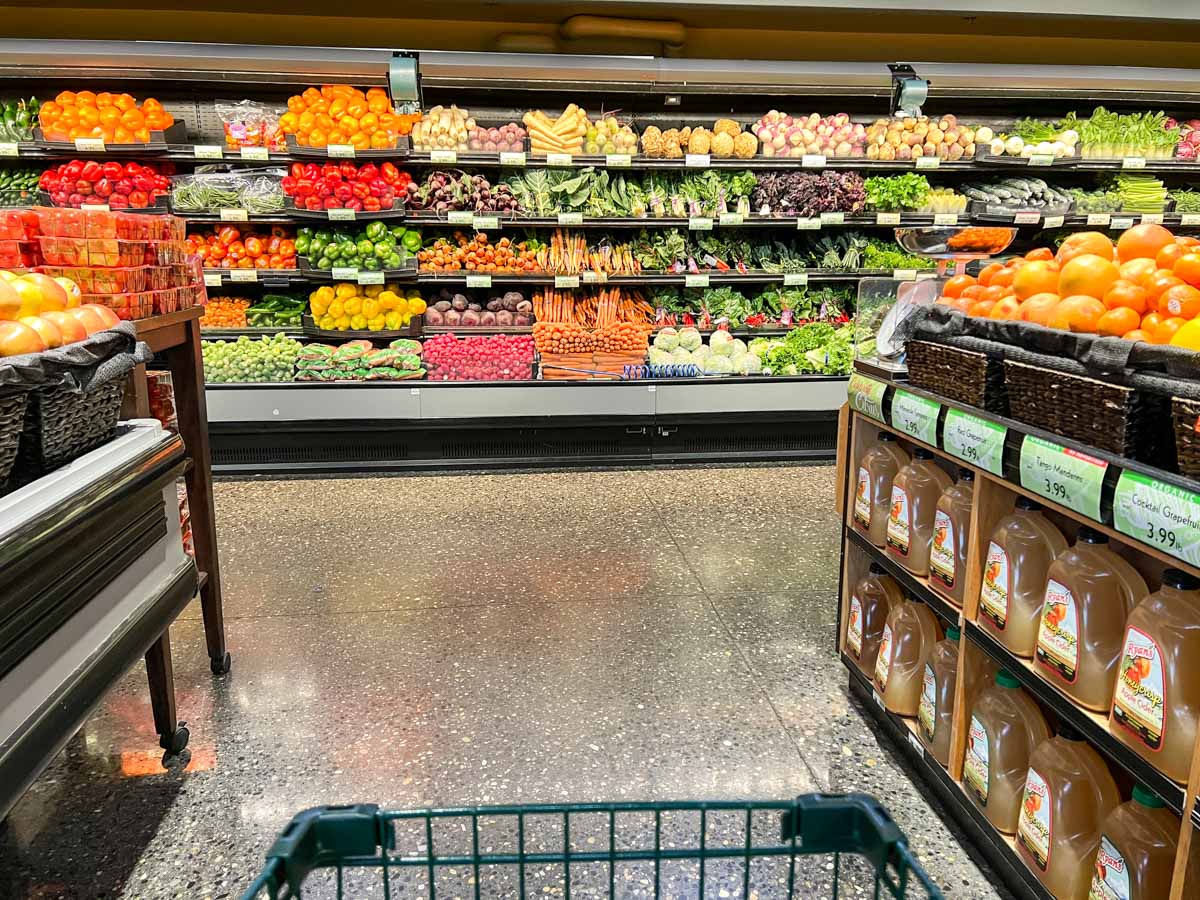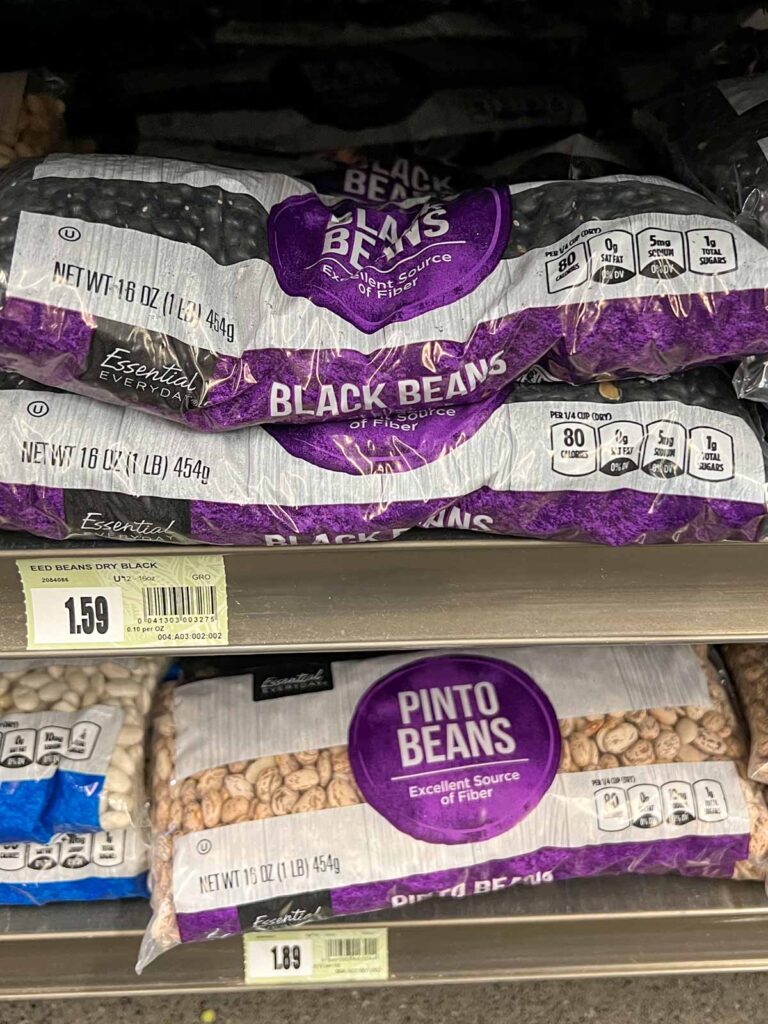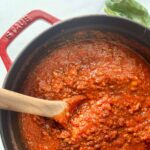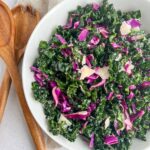Food prices are the highest they have ever been. With these 15 tips, you will save money at the grocery store and keep your food budget under control.

1. Plan your meals ahead of time
Whether you are single or feeding a family, planning your meals may seem like a waste of time. However, it is critical to do this if you want to save money on your grocery bill.
With a plan, you will only purchase the food you need and not fill your shopping basket with various foods that just waste money.
Another benefit of planning your meals is that you know what you will be cooking when it comes time to cook dinner—no more standing in front of your refrigerator at 5:00 PM wondering what to prepare for dinner. That is motivation enough to spend a little time planning meals.
A few tips to keep in mind when planning meals
- Plan for at least one week's worth of meals.
- Keep a list of favorite meals and recipes to help speed the process.
- Designate one night to use leftovers.
- Plan meals that have common ingredients. That way you won't spend money on ingredients that you will only use once.
2. Make a grocery list and stick to it
Always make a grocery list and stick to it. Don't be tempted by impulse buys; they will increase your grocery bill quickly.
3. Shop your pantry, refrigerator, and freezer
Before going grocery shopping, shop your pantry, refrigerator, and freezer to see which ingredients you already have on hand.
If you are missing ingredients, see what you already have in your pantry that you can substitute. Don't buy what you don't need!
For example, if your recipe calls for chicken breast and you have chicken thighs in the refrigerator, substitute the thighs in place of chicken breasts.
Cheese is also easily substituted. For example, if you have mozzarella cheese on hand but the recipe calls for cheddar, you can use mozzarella cheese instead. You might even like the dish better with a different type of cheese.
4. Purchase fewer pre-packaged and convenience foods
Buy block cheese and shred it yourself-bonus. It won’t contain preservatives and anti-caking ingredients, which prevent cheese from melting properly.-picture of bulk versus shredded cheese.
Instead of purchasing dehydrated potatoes, buy fresh potatoes, make a batch of mashed potatoes, and freeze them in portions you use. This is a less expensive and healthier alternative to buying packaged dehydrated potatoes.
Make your pancake/muffin mix and store it in an airtight container. Ready to use the next time you want pancakes or muffins.
Avoid purchasing prepared meals from the freezer section. Instead, make a double batch of a recipe and freeze it.
Instead of purchasing canned or pre-made soup, make your own and freeze it.
5. Buy dry pantry items from the bulk food section

Purchasing dry pantry items in the bulk section can lead to significant savings, and it allows you to purchase only the amount you need.
The following items are a few examples of foods sold in bulk that are considerably less expensive than purchasing them pre-packaged.
- Nuts
- Beans
- Rice
- Dried fruit
- Oatmeal
- Coffee
6. Purchase spices from the bulk food section instead of in small glass jars


Spices are essential in cooking because they enhance the flavor of food. Without them, meals would be dull. However, spices can be costly.
To minimize the impact of the cost of spices, purchase them from the bulk food section.
Purchase the amount you will use within the next 6 months, so they are fresh.
Pro-Tip
Save used spice bottles and fill them with spices you purchase from the bulk food section.
7. Purchase leg quarters, whole chicken, or chicken thighs.
Chicken is one of the most popular and budget-friendly proteins to buy. However, there is a large range in cost between whole chicken and various pieces.
The least expensive cuts are leg quarters, chicken thighs, and drumsticks. In comparison, boneless chicken breasts are the most costly.
Whole chickens are also a budget-friendly option and versatile. Roast them in the oven, and cook them in your air-fryer or slow cooker. Serve the chicken for one meal and use the leftovers in salads, sandwiches, casseroles, or wraps for lunch.
If you prefer chicken pieces rather than a whole chicken, cut the chicken into 8 pieces. If you have not done this before, this video does a great job explaining how to do it, and this video shows you how to do it in under a minute!
Another way to save money when purchasing chicken is to debone your chicken. This video explains how to debone chicken breasts and thighs.
8. Eat less meat
Let's face it; meat prices have skyrocketed. Eating less meat is good for your health, good for the environment, and good for your pocketbook!
Try some of the following:
- Make egg dishes like a quiche or frittata as a main dish for dinner.
- Embrace beans and legumes.
- Eat less meat by making a bean dish entrée such as 3-bean chili or a black bean burger. If you need additional bean recipes, The Bean Institute has recipes for appetizers, salads, sides, and entrees.
- Eat more lentils. Lentil soup is delicious. Another idea is to replace ¼-1/2 of ground meat in tacos, spaghetti sauce, meatloaf, and meatballs with cooked lentils.
- Purchase canned tuna to make tuna casserole or tuna salad.
- Canned salmon is perfect for making salmon cakes or salmon chowder. For a light and healthy dinner, top a Caesar Salad with canned salmon.
9. Purchase produce in Season

Fruits and vegetables are an essential part of a healthy diet. However, they can be costly.
Purchase fruits and vegetables when they are in season. This guide from the United States Agriculture Department is a wonderful resource.
Bananas are generally a bargain year-round.
Frozen fruits and vegetables are a great buy. They are picked at their peak and then flash-frozen. They are a great alternative to fresh, and you will save money!
Consider canned fruits and vegetables. When purchasing canned fruits, choose those packed in fruit juice or light syrup. Look for canned vegetables that are labeled lower sodium.
10. Prep your produce


It is tempting to purchase prepped produce such as various salad mixes, but they come at a costly price.
Instead, purchase heads of lettuce and other produce such as carrots, celery, cabbage, etc. Prep them by washing and cutting them, and then store the produce in an airtight container for the week.
Pro Tip: Be sure to use a lettuce spinner to get the excess water off the lettuce so that it does not wilt during the week.
11. Make simple salad dressings

Store-bought salad dressings are an excellent convenience. However, they are costly and often contain a lot of additives.
Consider making your dressings. It only takes a few minutes to make a batch. Store them in a squeeze bottle or jar in your refrigerator, and you have them for upcoming meals.
This simple vinaigrette is my go-to dressing. Make variations by using different vinegar such as balsamic, red wine vinegar, or apple cider vinegar.
Add 1 teaspoon of honey to dressings made with red wine vinegar or apple cider vinegar to balance the acidity. Lemon juice is also a refreshing substitution for vinegar.
12. Make your spice blends


Spice blends are convenient but costly. Instead, make your own with spices you already have on hand.
There are numerous recipes online to make tacos, Italian, steak, and all-purpose chicken seasoning.
You can customize them to your family's taste. If someone does not like a particular spice, leave it out.
13. Cook your beans


Canned beans are a fantastic convenience; however, they are expensive. Instead, purchase a bag of beans or, better yet, get them in the bulk food section of your grocery store.
Cook them and freeze them in 1-2 cups portions. To thaw them quickly, run them under cold water or defrost them in the microwave. Another option is to add frozen beans to a pot of chili or soup.
If you have never cooked dried beans, The Bean Institute has this resource, Traditional Four-Step Method to Cook Beans, which will walk you through each step. It's easy to cook dry beans. Once you try it, you won't go back to buying canned beans.
14. Purchase bouillon cubes instead of boxed or canned broth


Boullion cubes are considerably less expensive than a box of broth, and they take less space up in your pantry.
15. Minimize food waste
A January 2020 study from Pennsylvania State University revealed that the average United States household wastes about one-third of the food they purchase.
The study published in the American Journal of Agricultural Economics estimated the annual cost of wasted food to be $1,866.
To minimize food waste, try some of these ideas:
- Only purchase the amount of fresh produce that you will consume in a week.
- Cook vegetables that are past their prime. This will add a few days to their shelf-life. If you are not going to use them soon, freeze them.
- Freeze leftovers that are not going to be eaten in the next 3-4 days
- Juice citrus fruit that is past its time.
- Bake or stew fruit that is past its prime. Serve it over ice cream or in yogurt.
- When bananas are past their prime, freeze them to use later in smoothies, banana bread, or banana muffins.
Repurpose Food Scraps
- Bread ends and crusts can be double-bagged and frozen; when you have a sufficient amount, make stuffing, croutons, bread pudding, overnight French toast, or use them for bread cru
- Make your vegetable stock with leftover trimmings. Keep a gallon-size Ziploc bag in the freezer and throw ends of carrots, celery, onions, and the like in it. When the bag is full, empty it into a stockpot with some water and a little salt, and let it simmer for a few hours. After about 3-4 hours, you have fresh homemade stock that can be used in soup, gravy, and everyday cooking!
Bonus: Take advantage of store sales and coupons
- Take advantage of store sales
- Coupons are a great way to save money if you use them on items you would normally purchase.

















Comments
No Comments